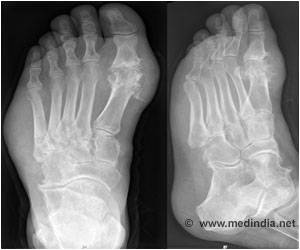A randomized, double-blind clinical trial has revealed that corticosteroids are more effective than the more expensive treatment.

The new study is the first large randomized clinical trial in patients with carpometacarpal (CMC) osteoarthritis (thumb arthritis). The study compared a placebo, an injection of a local anesthetic called bupivacaine, with two commonly used injectable treatments: a corticosteroid called triamcinolone acentoide and hylan G-F 20, which is made from a natural substance that lubricates and decreases inflammation in the joints. CMC osteoarthritis, caused by regular wear and tear, is common in individuals over 60. It occurs in 80% of women who are 80 years of age or older.
The researchers enrolled 200 patients with thumb arthritis and randomized them to receive bupivacaine, hylan G-F 20, or triamcinolone. The average age of patients in the study was 66.5 and roughly 70% were female. Over the 26-week study, pain, as measured by the Visual Analogue Scale (VAS), showed a statistically and clinically significant improvement in all treatment groups. Each group gained slightly more than an average of 10 points; an improvement in 10 points is clinically meaningful. Patients who received corticosteroids had slightly greater improvements in pain compared to patients who received Hylan G-F 20. No treatment arm had clinically meaningful improvements in function.
"Overall, this was a negative trial," said Dr. Mandl. "If you compare the three treatments to each other, neither the steroid or Synvisc provided better pain relief than bupivacaine. Bupivacaine shouldn''t do anything. It should numb and wear out in 20 minutes, but even that seems to help some people. What this suggests is that maybe the injection itself is making people feel better."
The researchers say that clinicians can consider trying any of the three treatments in their patients with CMC. "It may be that steroids are the most effective, so I would probably try steroids first. If that didn''t work, then I would try hylan G-F 20. If patients were hesitant to try either steroids or hylan G-F 20, I''d even try bupivacaine," said Dr. Mandl.
The researchers point out that clinicians need to weigh the pros and cons of the different treatments. For example, Hylan G-F 20 is usually prescribed every six months and could be used repeatedly over time. Steroid injections, however, if given repeatedly, could end up damaging the joint further. Hylan G-F 20 costs in the ballpark of $600 for each treatment, whereas corticosteroids cost roughly $15 per treatment.
Advertisement
The study was partially funded by the Arthritis Foundation, the National Institutes of Health, and Genzyme Biosurgery. Genzyme provided the Synvisc at no charge, and the company had no input into study design, analysis or interpretation of the data.
Advertisement
Source-Newswise















